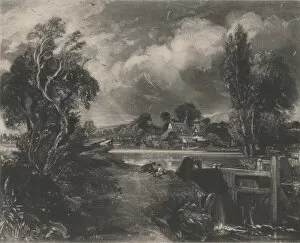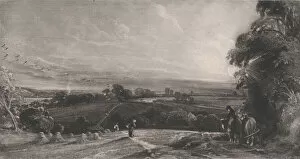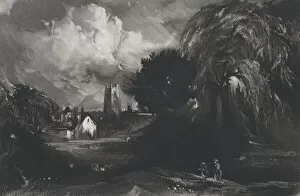Proof Before Published State Collection
"Exploring the Artistic Journey: David Lucas and his 'Proof Before Published' State" Step back in time to Yarmouth, Norfolk in 1830
All Professionally Made to Order for Quick Shipping
"Exploring the Artistic Journey: David Lucas and his 'Proof Before Published' State" Step back in time to Yarmouth, Norfolk in 1830, where the talented artist David Lucas began his creative journey. With a keen eye for capturing nature's beauty, Lucas brings us glimpses of enchanting landscapes through his remarkable works. In 1829, we find ourselves transported to A Summerland, immersed in its idyllic charm. The strokes of Lucas's brush reveal a serene scene that beckons us to embrace the tranquility of this hidden gem. Moving along our artistic expedition, we encounter A Lock on the Stour from 1830. Here, Lucas showcases his mastery by skillfully depicting the intricate details of this waterway lock. Each stroke seems to whisper tales of boats passing through and echoes of conversations carried by gentle currents. Jacques and the Wounded Stag (Shakespeare, As You Like It, Act 2 Scene 1) transports us into a theatrical realm within Lucas's artistry. Through vivid imagery inspired by Shakespearean drama, he captures Jacques's poignant encounter with a wounded stag—a moment frozen in time that evokes both empathy and reflection. As Autumnal Sunset graces our presence in 1830, we witness nature's transition from vibrant hues to warm tones bidding farewell to summer. In this masterpiece created by David Lucas himself, one can almost feel the cool breeze gently rustling leaves as daylight fades away. Our journey continues with Stoke-by-Neyland from 1829—an exquisite portrayal of rural life nestled amidst picturesque surroundings. Through meticulous attention to detail and delicate brushwork techniques, Lucas invites us into an era long gone yet forever preserved on canvas. A Mill takes center stage twice—both instances showcasing different perspectives captured during that same year—1829. These depictions offer insights into how subtle variations can transform an ordinary subject into extraordinary art under David Lucas's skilled hand.









